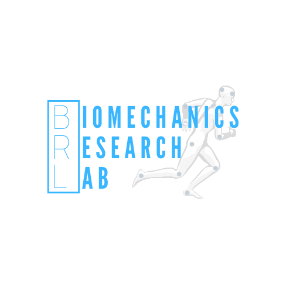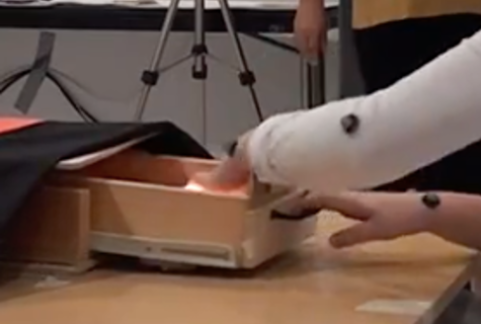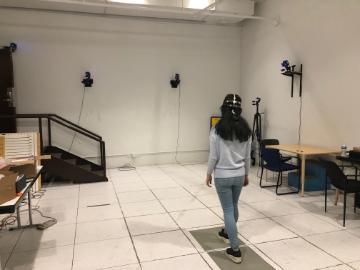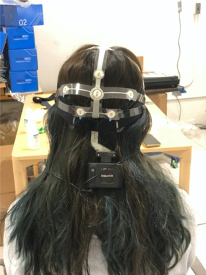Biomechanics Research Lab

The Biomechanics Research Lab (BRL) is home to our state of the art motion capture system. The BRL utilizes a Vicon Nexus 2.9 motion capture system along with 10 Vero cameras attached around the walls. Our lab is equipped with portable electromyography (EMG) and electroencephalogram (EEG) systems to analyze the influence of skeletal muscle and the brain on human movement. Additionally, we have two force plates installed in the ground to measure ground reaction forces during locomotion. The combination of these systems allow our researchers to analyze movements such as gait, sit to stand, postural sway, balance, and other functional tasks.
Current projects in our lab examine:
- Bimanual coordination in children with bilateral cerebral palsy
- Neurophysioloigcal motor responses of gait initiation in Huntington's Disease
Bimanual coordination in children with bilateral cerebral palsy during a drawer opening task
Principal Investigator:
Grace-Anne Herard, DPT, EdM Student
Ya-Ching Hung, EdD
Andrew Gordon, PhD
This ongoing study examines bimanual coordination in children with bilateral cerebral palsy (BCP) by comparing findings with those of children with typical development (TD). It involves asking children with BCP and those with TD to perform a drawer opening task under speed and hand constraints. Reflective markers are placed at various bony landmarks on the children’s upper extremities and neck in order to collect 3-D kinematic data using infrared cameras (Vicon) as they perform the tasks. The data are subsequently processed to measure task completion time, goal synchronization of the two hands, movement overlap time and to determine whether the specific movement of one hand affects the speed of the other hand. The expectation is that findings from this study will facilitate the development of therapeutic interventions aimed at improving bimanual coordination in children with BCP.

Neurophysiological motor responses of gait initiation in Huntington's Disease
Principal Investigator:
Radhika Desai, MS, PhD Student
Lori Quinn, PT, EdD
The neurophysiological deficits that underlie gait impairments in premanifest and manifest HD are not known. By using electroencephalography (EEG) to measure movement related potentials (MRPs) in brain activity during gait initiation, we will gain insight into the temporal abnormalities of the basal ganglia (BG)-supplementary motor area (SMA) interaction. This will provide a bridge between functional deficits and neuropathology in the progression of HD, and has the potential to both impact clinical practice and inform the development of new non-invasive biomarkers. Identifying biomarkers, either invasive or non-invasive, remains a critical goal in HD research. Non-invasive biomarkers will allow clinicians to more easily identify pre-manifest and early-stage individuals that are close to the manifestation of symptoms, ultimately optimizing clinical management. MRPs in brain activity during gait initiation have the potential to be one such low-cost non-invasive biomarker in HD. Although disturbances in gait initiation begin in the premanifest stages and continue through disease progression, little is known about the neural mechanisms underlying these disturbances. MRPs can provide direct neurophysiological evidence of malfunction of BG-SMA interaction in gait disturbances, and provide a sensitive and non-invasive biomarker for HD. Furthermore, MRPs could extend the opportunity to better diagnose movement impairments in people with HD, as well as to potentially be utilized as a marker of intervention effectiveness for exercise and locomotor training studies. A biomarker established through this modality would provide a direct view of the underlying pathophysiology of motor function, and therefore is highly likely to be a sensitive measure of disease progression. Therefore, the task to understand neurophysiological mechanisms that underlie gait impairments in HD remains critical.

